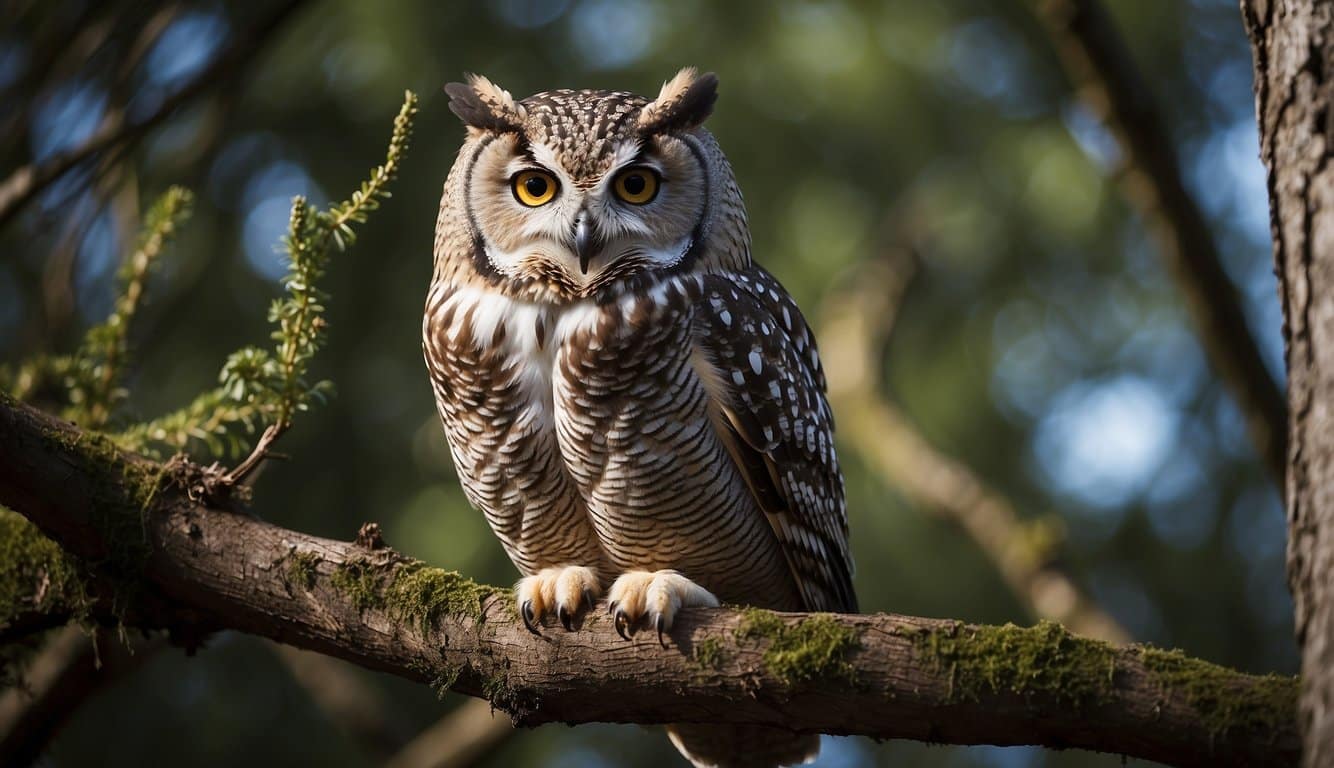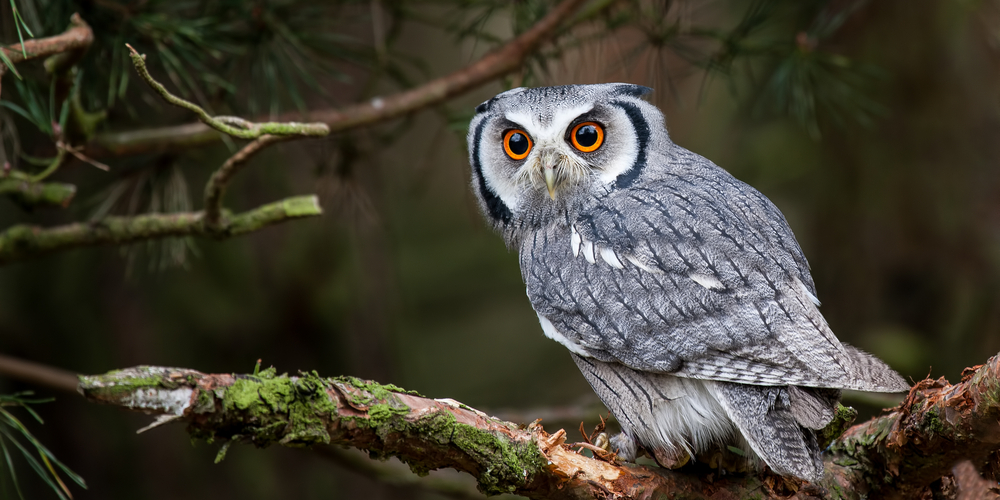| Question | Do Owls Eat Snakes? |
|---|---|
| Answer | Yes, Occasionally |
| More Info | Owls are opportunistic predators and their diet can include a wide variety of prey, depending on the owl species and what is available in their habitat. Snakes are featured in the diet of many owl species, significantly larger owls like the Great Horned Owl. Owls typically hunt during the night and their ability to silently swoop down on prey makes them effective at catching snakes among other creatures. Additionally, their strong talons and beak help them handle and consume snakes effectively. |
What Owls Eat and WANT to Eat
When you consider the diet of owls, you are delving into the diverse foraging habits of an extraordinary group of birds.
Owls are known to be formidable predators in the wild, with their diet playing a crucial role in their survival.
Here’s a snapshot of what these nocturnal hunters eat:
- Rodents: A staple in the diet of most owl species, providing essential nutrients.
- Insects: Often consumed by smaller owl species and during times when other prey is scarce.
- Small mammals: Such as shrews or bats, a high-energy food source for owls.
- Birds: Some species of owls may also predate on smaller birds.
- Reptiles: Including snakes, which are a significant part of the diet for certain owl species, like the Great Horned Owl.
Understanding the dynamics of an owl’s diet sheds light on their role in the ecosystem as natural pest controllers and their adaptability in diverse environments.
Whether in forests, deserts, or urban settings, owls exhibit remarkable hunting dexterity.
For instance, the Eastern Screech Owl and the Burrowing Owl are agile hunters of reptiles and rodents alike.
Owls deploy a range of hunting techniques from silent flight to their keen night vision. This enables them to track and capture various prey with precision.
Predatory Behaviors
Owls possess specialized skills for hunting a variety of prey, including serpents. Their predatory behaviors display a remarkable level of adaptation and efficiency.
Hunting Strategies
Owls employ stealth and surprise in their hunting techniques to capture snakes effectively. Here are their most common strategies:
- Nocturnal Hunting: Utilizing their keen night vision, owls hunt primarily in the darkness, giving them the upper hand over snakes, which have less visual acuity at night.
- Silent Flight: Feathers with unique fringes allow owls to fly silently, approaching their prey without detection.
- Perching and Pouncing: Often, owls will watch patiently from a perch before swooping down to grasp unsuspecting snakes.
- Auditory Hunting: With asymmetrically placed ears, owls can pinpoint the rustling of snakes in foliage, even when visibility is low.
Adaptations for Preying on Snakes
Your understanding of an owl’s adaptations will help you appreciate their proficiency in subduing snake prey:
- Talons and Beak: Owls have strong, sharp talons and a powerful beak capable of delivering a lethal grip and bite to snakes.
- Head Rotation: An owl can rotate its head up to 270 degrees, enhancing its ability to locate and keep an eye on snakes.
- Size and Strength: Larger owl species, like the Great Horned Owl, can tackle sizeable venomous snakes, while smaller species may focus on less formidable snakes.
Owl Species That Particularly Enjoy Snakes
When exploring the diets of owls, you’ll discover they are not picky predators. Their prey selection is broad, but there are specific snake species that owls are known to consume depending on size, availability, and geographic location.
- Great Horned Owls, formidable predators, often hunt larger and more challenging prey like venomous snakes.
- Garter Snakes are common meals for smaller owl species due to their smaller size and relative abundance in various habitats.
Here’s a breakdown of snake species that commonly fall prey to different owls:
- Great Horned Owl: Prefers larger snakes, sometimes even rattlesnakes.
- Eastern Screech Owl: Frequently targets smaller snakes such as ribbon snakes.
- Barred Owl: This species has been known to eat a variety of snakes found in wooded areas.
- Burrowing Owls: They live in open regions and may feed on smaller ground-dwelling snakes.
Owl-Snake Interactions: Snakes Are Not an Easy Meal
In the dynamic ecosystem, you’ll find that owls are significant predators of snakes. Their interactions illustrate a complex food web where each species plays a critical role.
Owl Predation Impact on Snake Populations
- Owls, particularly species like the Great Horned Owl, are adept hunters that feed on a variety of prey, including snakes.
- The presence of owls can influence local snake populations. The extent of this impact depends on:
- The availability of snakes in the habitat.
- The number of owls residing in and hunting within the same area.
Defensive Tactics of Snakes
- When faced with an owl, snakes employ several defensive strategies:
- Camouflage to blend in with their surroundings.
- Quick movements to escape capture.
- Some species of snakes may exhibit more aggressive defense mechanisms, like hissing or striking, to deter their avian predators.
Dietary Impact on Owl Health
When you consider the health of owls, their diet plays a crucial role. Owls that consume a variety of prey, including snakes, tend to be more robust due to the nutritional diversity they garner from such a diet. Here’s how snakes influence the health of owls:
- Nutritional Value: Snakes provide essential nutrients like protein, which is vital for muscle development and energy in owls.
- Hunting Skills: Owls that prey on snakes often have advanced hunting skills, which can be a sign of a healthy and well-developed owl. For owls, being effective predators is linked to their overall well-being.
- Adaptability: Owls with the ability to hunt diverse prey, including snakes, exhibit adaptability to different environments, which can be indicative of good health.
Consider the following aspects of a diet that includes snakes:
- Energy Levels: Efficient hunters have higher energy levels, and snakes are a high-energy food source.
- Physical Development: Owls that consistently capture challenging prey like snakes are likely to have better physical condition and developmental health.
- Longevity: A varied diet contributes to overall health, potentially increasing an owl’s lifespan.
Frequently Asked Questions
In this section, you’ll discover specific details about the dietary habits of owls, exploring their prey preferences and how these may vary with geography and seasons.
What types of prey are common in the diet of owls?
Owls are versatile birds of prey, known for their diverse diet that typically includes rodents, insects, fish, and small mammals. Their powerful talons and beaks are adept at hunting and consuming a variety of prey.
Are certain species of owls more prone to hunting snakes?
Yes, species such as the Great Horned Owl and the Eastern Screech Owl have shown a particular affinity for including snakes in their diet.
How does seasonal change affect an owl’s feeding habits?
An owl’s diet can shift with the seasons due to prey availability. During spring and summer, when snakes are more active, owls may prey on them more frequently.
Do the diets of owls vary in different geographic locations?
Indeed, the diets of owls reflect their local ecosystems. Owls residing in desert regions might consume more lizards and snakes, while those in forested areas might eat more rodents and small birds.
Can an owl’s diet include venomous snakes?
Owls have been observed eating a range of snake species, even including venomous varieties, as they have a high tolerance to snake venom.
How do the hunting strategies of owls adapt to different prey like snakes?
Owls use their silent flight and sharp vision to locate prey. When targeting snakes, they use their talons to swiftly seize their prey.
Last update on 2025-06-06 / Affiliate links / Images from Amazon Product Advertising API





